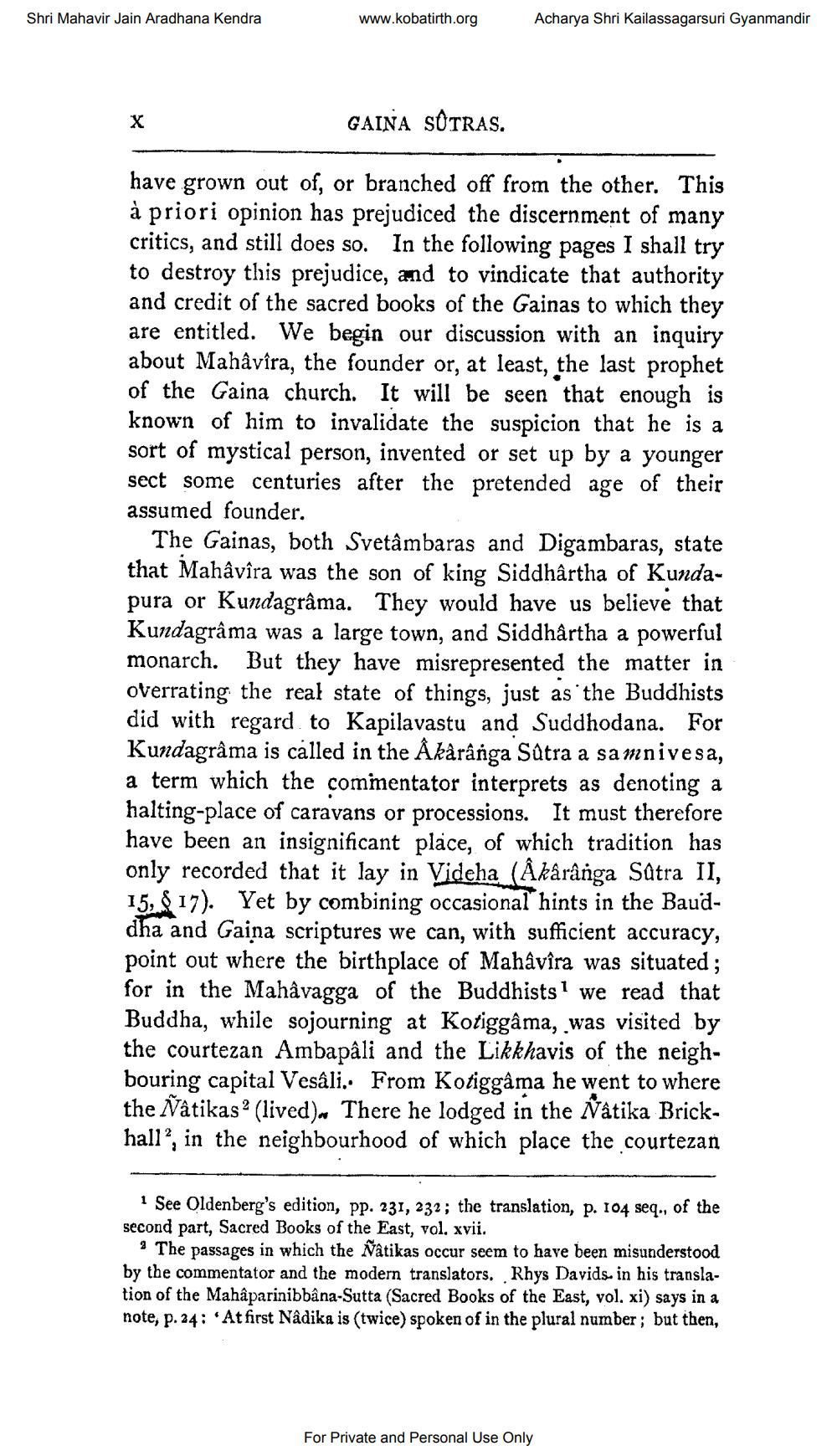Book Title: Gaina sutras Author(s): Hermann Jacobi Publisher: Clarendon Perss View full book textPage 6
________________ Shri Mahavir Jain Aradhana Kendra www.kobatirth.org X Acharya Shri Kailassagarsuri Gyanmandir GAINA SUTRAS. have grown out of, or branched off from the other. This à priori opinion has prejudiced the discernment of many critics, and still does so. In the following pages I shall try to destroy this prejudice, and to vindicate that authority and credit of the sacred books of the Gainas to which they are entitled. We begin our discussion with an inquiry about Mahavira, the founder or, at least, the last prophet of the Gaina church. It will be seen that enough is known of him to invalidate the suspicion that he is a sort of mystical person, invented or set up by a younger sect some centuries after the pretended age of their assumed founder. The Gainas, both Svetâmbaras and Digambaras, state that Mahâvîra was the son of king Siddhartha of Kundapura or Kundagrâma. They would have us believe that Kundagrâma was a large town, and Siddhartha a powerful monarch. But they have misrepresented the matter in overrating the real state of things, just as the Buddhists did with regard to Kapilavastu and Suddhodana. For Kundagrâma is called in the Âkârânga Sûtra a samnivesa, a term which the commentator interprets as denoting a halting-place of caravans or processions. It must therefore have been an insignificant place, of which tradition has only recorded that it lay in Videha (Âkârânga Sûtra II, 15,17). Yet by combining occasional hints in the Bauddha and Gaina scriptures we can, with sufficient accuracy, point out where the birthplace of Mahâvîra was situated; for in the Mahâvagga of the Buddhists1 we read that Buddha, while sojourning at Kotiggâma, was visited by the courtezan Ambapâli and the Likkhavis of the neighbouring capital Vesâli.. From Kotiggâma he went to where the Ñâtikas2 (lived). There he lodged in the Ñâtika Brickhall, in the neighbourhood of which place the courtezan 1 See Oldenberg's edition, pp. 231, 232; the translation, p. 104 seq., of the second part, Sacred Books of the East, vol. xvii. "The passages in which the Ñâtikas occur seem to have been misunderstood by the commentator and the modern translators. Rhys Davids. in his translation of the Mahâparinibbâna-Sutta (Sacred Books of the East, vol. xi) says in a note, p. 24: At first Nâdika is (twice) spoken of in the plural number; but then, For Private and Personal Use OnlyPage Navigation
1 ... 4 5 6 7 8 9 10 11 12 13 14 15 16 17 18 19 20 21 22 23 24 25 26 27 28 29 30 31 32 33 34 35 36 37 38 39 40 41 42 43 44 45 46 47 48 49 50 51 52 53 54 55 56 57 58 59 60 61 62 ... 385
